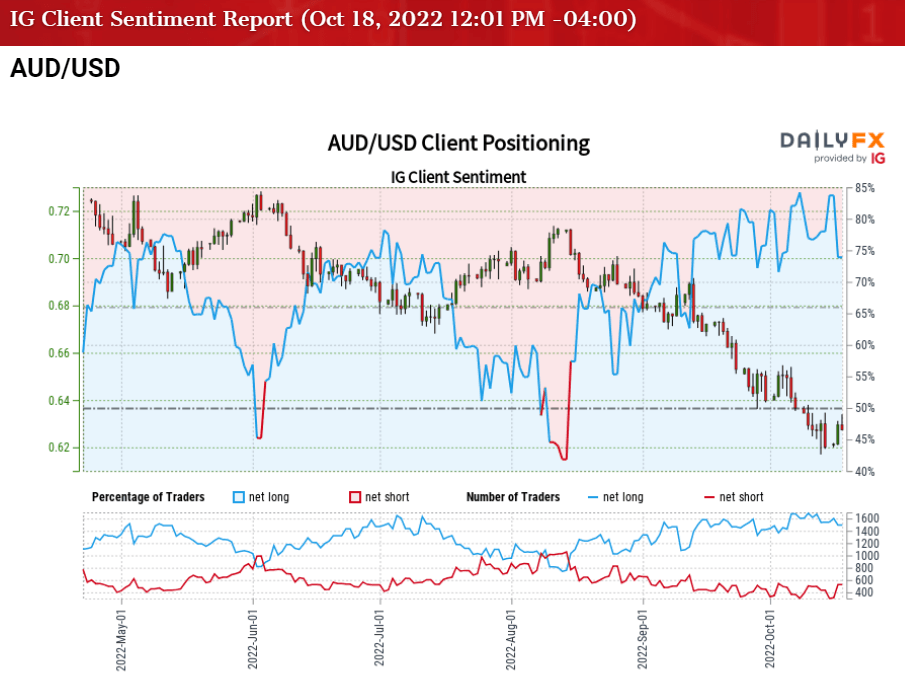Australian Dollar Talking Points
AUD/USD appears to be stuck in a narrow range following the kneejerk reaction to the US Consumer Price Index (CPI), but fresh data prints coming out of Australia may prop up the exchange rate as employment is expected to increase for the second consecutive month.
AUD/USD Rebound Pulls RSI Out of Oversold Zone Ahead of Australia Employment
The recent selloff in AUD/USD seems to have run its course as the Relative Strength Index (RSI) climbs out of oversold territory and the move above 30 in the indicator may keep the exchange rate afloat like the price action from last month.
At the same time, the update to Australia’s Employment report may generate a bullish reaction in the local currency as the economy is expected to add 25K jobs in September, and a further improvement in the labor market may keep the Reserve Bank of Australia (RBA) on track to further normalize monetary policy as “Board expects to increase interest rates further over the period ahead.”
However, AUD/USD may continue to track the negative slope in the 50-Day SMA (0.6684) as the minutes from the RBA’s October meeting reveal that “a smaller increase than that agreed at preceding meetings was warranted given that the cash rate had been increased substantially in a short period of time,” and the comments suggest the central bank is nearing the end of the hiking-cycle as Governor Philip Lowe and Co. show little intentions of carrying out a restrictive policy.
In turn, the rebound from the yearly low (0.6170) may end up being short-lived as the Federal Reserve’s Summary of Economic Projections (SEP) reflect a steeper path for US interest rates, but a further recovery in AUD/USD may continue to alleviate the tilt in retail sentiment like the behavior seen earlier this year.

The IG Client Sentiment (IGCS) report shows 72.32% of traders are currently net-long AUD/USD, with the ratio of traders long to short standing at 2.61 to 1.
The number of traders net-long is 4.54% lower than yesterday and 9.81% lower from last week, while the number of traders net-short is 21.34% higher than yesterday and 7.65% higher from last week. The decline in net-long interest has helped to alleviate the crowding behavior as 75.87% of traders were net-long AUD/USD last week, while the rise in net-short position comes as the exchange rate appears to be stuck in a narrow range.
With that said, another rise in Australia Employment may keep AUD/USD afloat as the bearish momentum abates, but the exchange rate may continue to track the negative slope in the 50-Day SMA (0.6684) as the Federal Open Market Committee (FOMC) pursues a restrictive policy.
Introduction to Technical Analysis
Market Sentiment
Recommended by David Song
AUD/USD Rate Daily Chart

Source: Trading View
- The recent selloff in AUD/USD appears to have stalled ahead of the 0.6120 (78.6% retracement) to 0.6160 (100% expansion) region as the Relative Strength Index (RSI) recovers from oversold territory, with a break/close above the 0.6370 (78.6% expansion) area raising the scope for a run at the monthly high (0.6547).
- Need a close above the Fibonacci overlap around 0.6460 (61.8% retracement) to 0.6530 (61.8% expansion) to open up the 0.6650 (50% expansion) area, with a move above the 50-Day SMA (0.6684) opening up the 0.6760 (50% retracement) to 0.6770 (100% expansion) region.
- However, AUD/USD may continue to track the negative slope in the moving average as it struggles to push above the 0.6370 (78.6% expansion) area, with a break/close below the 0.6120 (78.6% retracement) to 0.6160 (100% expansion) region bringing the 0.6020 (50% expansion) to 0.6040 (78.6% retracement) zone on the radar.
Trading Strategies and Risk Management
Becoming a Better Trader
Recommended by David Song
— Written by David Song, Currency Strategist
Follow me on Twitter at @DavidJSong


